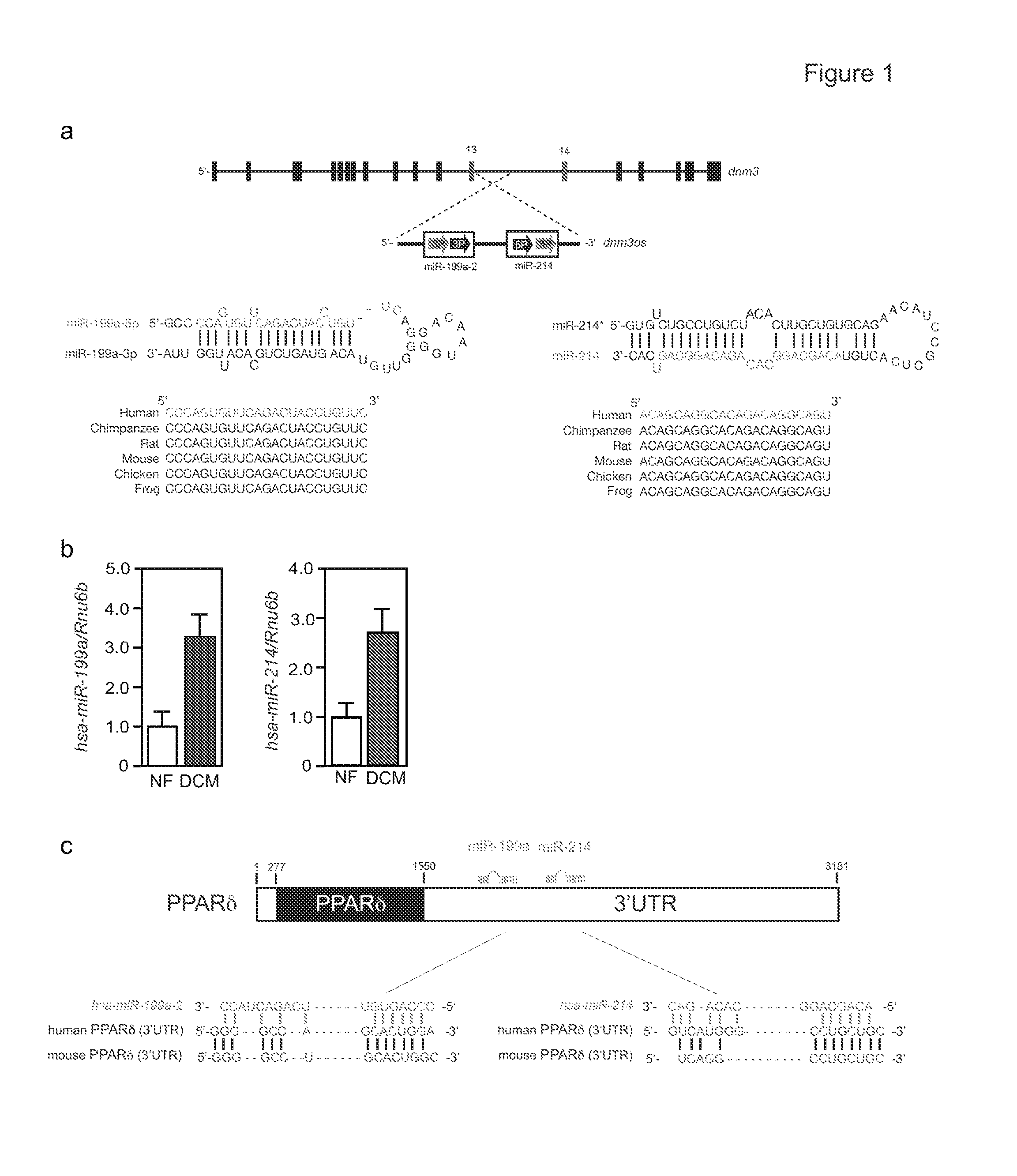Means and methods for counteracting, delaying and/or preventing adverse energy metabolism switches in heart disease
a heart disease and adverse energy metabolism technology, applied in the field of molecular biology and medicine, can solve the problems of reducing blood flow to the heart muscle, affecting the development of cardiovascular disease, affecting the survival rate of patients, etc., and achieves the effects of reducing the amount and/or activity of ppar, increasing the risk of heart disease, and increasing the number of mir-199a and/or mir-214
- Summary
- Abstract
- Description
- Claims
- Application Information
AI Technical Summary
Benefits of technology
Problems solved by technology
Method used
Image
Examples
examples
Materials and Methods
[0088]Mice. For aortic banding procedures, we made use of two-month-old wild-type B6CBA. Mice homozygous for PPARδ-floxed alleles (ppardF / F) and transgenic αMHC-MerCreMer (αMHC-MCM)1 mice were crossed to generate double-transgenic (αMHC-MCM-ppardF / F) mice. Mice at eight weeks of age (αMHC-MCM-ppardF / F and control ppardF / F) were treated with vehicle or tamoxifen (20 mg / kg / day) by daily intraperitoneal injections for five consecutive days. Tamoxifen was diluted in 10 / 90% v / v ethanol / oil to a concentration of 1 mg / 100 μl, for the vehicle group, only ethanol / oil solution was injected. All protocols were performed according to institutional guidelines and were approved by local Animal Care and Use Committees.
[0089]Aortic Banding. Transverse aortic banding (TAC) or sham surgery was performed in two-month-old wild-type B6CBA by subjecting the aorta to a defined, 27 gauge constriction between the first and second truncus of the aortic arch as described previously in det...
PUM
| Property | Measurement | Unit |
|---|---|---|
| concentration | aaaaa | aaaaa |
| volume | aaaaa | aaaaa |
| pH | aaaaa | aaaaa |
Abstract
Description
Claims
Application Information
 Login to View More
Login to View More - R&D
- Intellectual Property
- Life Sciences
- Materials
- Tech Scout
- Unparalleled Data Quality
- Higher Quality Content
- 60% Fewer Hallucinations
Browse by: Latest US Patents, China's latest patents, Technical Efficacy Thesaurus, Application Domain, Technology Topic, Popular Technical Reports.
© 2025 PatSnap. All rights reserved.Legal|Privacy policy|Modern Slavery Act Transparency Statement|Sitemap|About US| Contact US: help@patsnap.com



